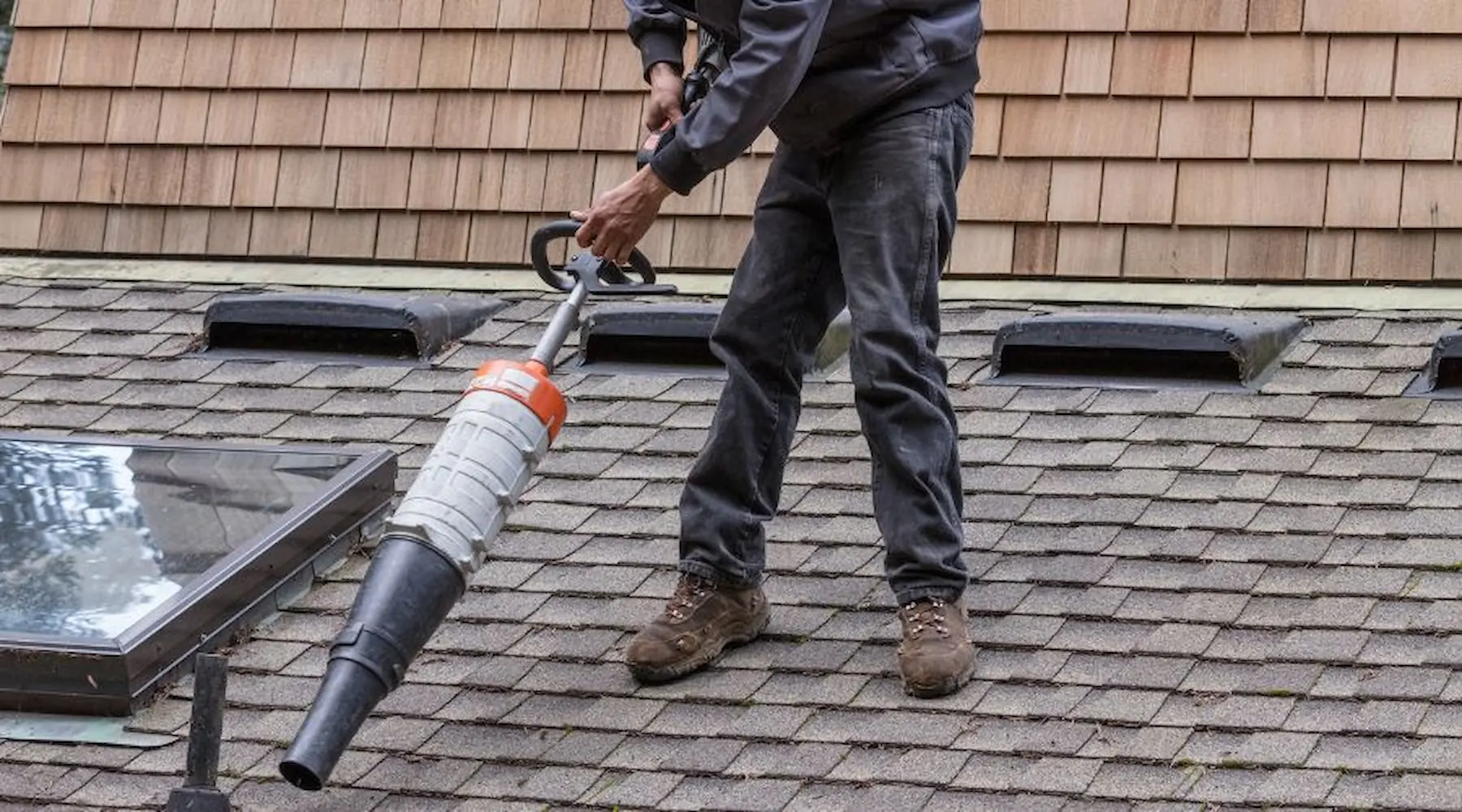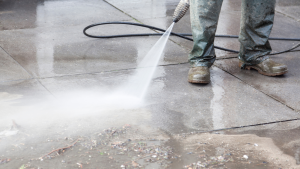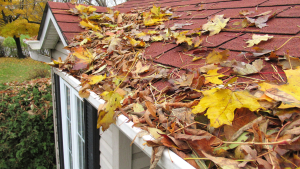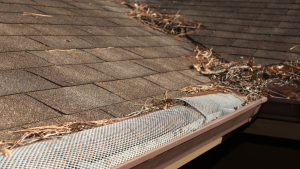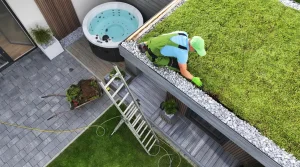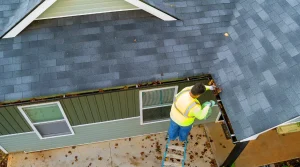Key Takeaways
- The best gutter cleaning tools include hand trowels, garden hoses, leaf blowers, and pressure washers.
- Different types of debris, such as silt, leaves, and sticks, require different tools and techniques for removal.
- Safety is essential when cleaning gutters—always use ladders with caution and wear protective gear.
Cleaning gutters is essential for maintaining your home’s exterior, preventing water damage, and ensuring proper water drainage. Having the right tools for gutter cleaning can make the job easier, safer, and more efficient. Hand trowels, shovels, garden hoses, leaf rakes, and leaf blowers are some of the best tools for cleaning gutters. While high-tech tools and advanced systems are available, traditional hand-cleaning methods remain highly effective for clearing gutters and downspouts.
In addition to these hand tools, you’ll need a few more essential items to complete the job properly and safely, including ladders, buckets, trash bags, gloves, eye protection, and landscape coverings to prevent debris from littering your yard. By using the right tools and following best practices, you can extend the life of your gutter system and prevent costly home repairs.
Essential Tools for Gutter Cleaning:
1. Hand Trowel and Shovel
A hand trowel or small shovel helps scoop out debris like leaves, twigs, and dirt from your gutters. This tool is ideal for breaking up the silt layer that often accumulates at the bottom of gutters, making removing debris easier.
2. Garden Hose
A garden hose is essential for flushing out the gutters after removing larger debris. Use it to wash away smaller particles and ensure that water flows freely through the downspouts.
3. Leaf Blower
A leaf blower helps blow out dry leaves and other loose debris. Attachments are available that can help extend the reach of your leaf blower, allowing you to clear gutters without climbing a ladder. However, this is only effective when the debris is dry.
4. Leaf Rake or Gutter Scoop
Specially designed gutter scoops or leaf rakes can make Gutter cleaning faster and easier. They are narrow enough to fit inside the Gutter while strong enough to handle heavy debris.
5. Pressure Washer
A pressure washer is highly effective for deep cleaning gutters and removing stubborn dirt. This tool can also clear downspouts of any blockages. Use a low-pressure setting to avoid damaging your gutters or roof shingles.
6. Vacuum Tools
Leaf vacuums or wet-dry vacuums are an excellent option for cleaning gutters without climbing ladders. Specialized attachments allow you to suck up debris from the ground or a safe height, making it a good choice for those who are uncomfortable with heights.
7. Claw Tool or Handheld Cultivator
A claw-like tool or handheld cultivator can help dislodge large pieces of debris, especially when clumped together. These tools work well for pulling out piles of leaves or small twigs.
8. Gloves and Eye Protection
Proper safety gear is critical when cleaning gutters. Thick gloves protect your hands from sharp objects, insects, and hazardous materials that might be stuck in the Gutter. Eye protection shields you from falling debris and dust.
9. Ladders
Depending on your home’s height, You’ll typically need a 20-foot extension ladder and a 10- to 12-foot step ladder. Always ensure that the ladder is stable and securely positioned before climbing.
10. Buckets and Trash Bags
Buckets and trash bags allow for easy disposal of debris. You can hook a bucket to your ladder for convenient access as you work through the Gutter.
11. Screw or Nut Drivers
If your gutters or downspouts need disassembly for cleaning, a screw or nut driver will allow you to remove screws or fasteners quickly. This can be necessary when dealing with stubborn clogs in downspouts.
12. Landscape Coverings
Laying down tarps or plastic sheets below your work area helps collect debris and protect your landscaping or lawn from damage.
What Gets Stuck in the Gutter?
Before you start cleaning, it’s essential to understand what kind of debris is clogging your gutters. Knowing this can help you select the right tools for the job and avoid missing any hidden obstructions.
1. Silt and Sediment
Over time, a thin layer of silt can accumulate at the bottom of your gutters. This sediment consists of tiny particles of dirt, dust, sand, and other fine materials. Left unchecked, it can form a thick layer that blocks water flow. Breaking up and removing this silt is one of the most critical tasks during gutter cleaning.
2. Leaves and Pine Needles
If you have trees near your home, leaves, pine needles, and small twigs will likely make their way into your gutters. These materials can build up quickly, especially in the fall, and create clogs. Wet leaves can become compacted, making them more challenging to remove.
3. Plant Growth
Seeds from nearby plants can get trapped in the gutter system, and with enough moisture and sunlight, they may begin to sprout. Small weeds or grass can grow in the dirt buildup, causing additional blockages.
4. Sticks and Branches
Wind and storms can carry more giant sticks and branches into your gutters. These materials tend to lodge in the gutter system and catch other debris, leading to more clogs.
5. Roof Shingles and Granules
Over time, roofing materials can wear down, and parts of the shingles may break off and fall into the gutters. Asphalt shingle granules can also wash down into the Gutter and accumulate, especially after heavy rain.
6. Miscellaneous Debris
If you have children or live in a busy neighbourhood, you might occasionally find small toys, balls, or even trash that have blown into your gutters. These items can cause blockages, especially in downspouts.
How Do You Get Rid of Gutter Dirt and Junk?
Removing the debris from your gutters is a multi-step process, and each type of debris may require a different approach.
1. Silt and Sediment Removal
Use a hand trowel or shovel to break up the silt layer at the bottom of the Gutter. After breaking it up, use a garden hose or pressure washer to remove the debris. Be careful not to damage the Gutter while scraping out the dirt.
2. Leaves, Twigs, and Pine Needles
For more extensive organic materials like leaves and pine needles, a handheld cultivator or claw tool works well for loosening the debris. After breaking it up, scoop it out with a gutter or trowel.
3. Clogged Downspouts
If water isn’t flowing freely through the downspouts, you must check for clogs. A garden hose or pressure washer may be able to clear out minor blockages, but if the clog is more severe, you may need to disassemble parts of the Gutter and manually remove the obstruction.
4. Final Cleanup
After removing the large debris, use a garden hose to rinse the remaining dirt and small particles. This ensures the gutter system is evident and ready to handle water drainage.
Professional Gutter Cleaning Services
Gutter cleaning can be daunting and potentially dangerous, especially if you aren’t comfortable working on ladders. Professional gutter cleaning services are available to handle the job, ensuring a thorough and safe cleaning process.
If you’re unsure how to disassemble parts of your Gutter to remove clogs safely, hiring a professional is best. They will have the expertise and tools to remove sections of the Gutter, clear out blockages, and reassemble the system without causing damage. Hiring a professional allows you to spend your weekend relaxing rather than dealing with a messy and time-consuming task.
Frequently Asked Questions (FAQ)
Q: How often should I clean my gutters?
It’s recommended to clean your gutters at least twice a year—once in the spring and once in the fall. However, if you have a lot of trees near your home, you may need to clean them more frequently.
Q: Can I clean my gutters without a ladder?
Yes, tools are available, such as telescoping gutter cleaning tools and leaf blowers with attachments, that allow you to clean gutters from the ground. However, a ladder may still be necessary for a more thorough cleaning.
Q: Is it safe to use a pressure washer to clean gutters?
Yes, but you should use a low-pressure setting to avoid damaging the gutters or roof shingles. Pressure washers are excellent for clearing tough blockages and dirt from downspouts.
Q: What should I do if my gutters are clogged with roots or plant growth?
Plant growth in gutters can cause severe blockages. You’ll need to remove the plants manually, clear the dirt, and flush the gutters with water. Installing gutter guards can prevent seeds from taking root in the future.
Q: Are gutter guards a good investment?
Gutter guards can reduce the frequency of gutter cleanings by removing large debris like leaves and twigs. However, you’ll still need to occasionally clean out finer materials like silt and sand.
Q: What happens if I don’t clean my gutters?
Neglecting gutter cleaning can lead to clogged downspouts, water overflow, roof damage, foundation issues, and mould growth. Regular cleaning is essential for preventing these problems.

